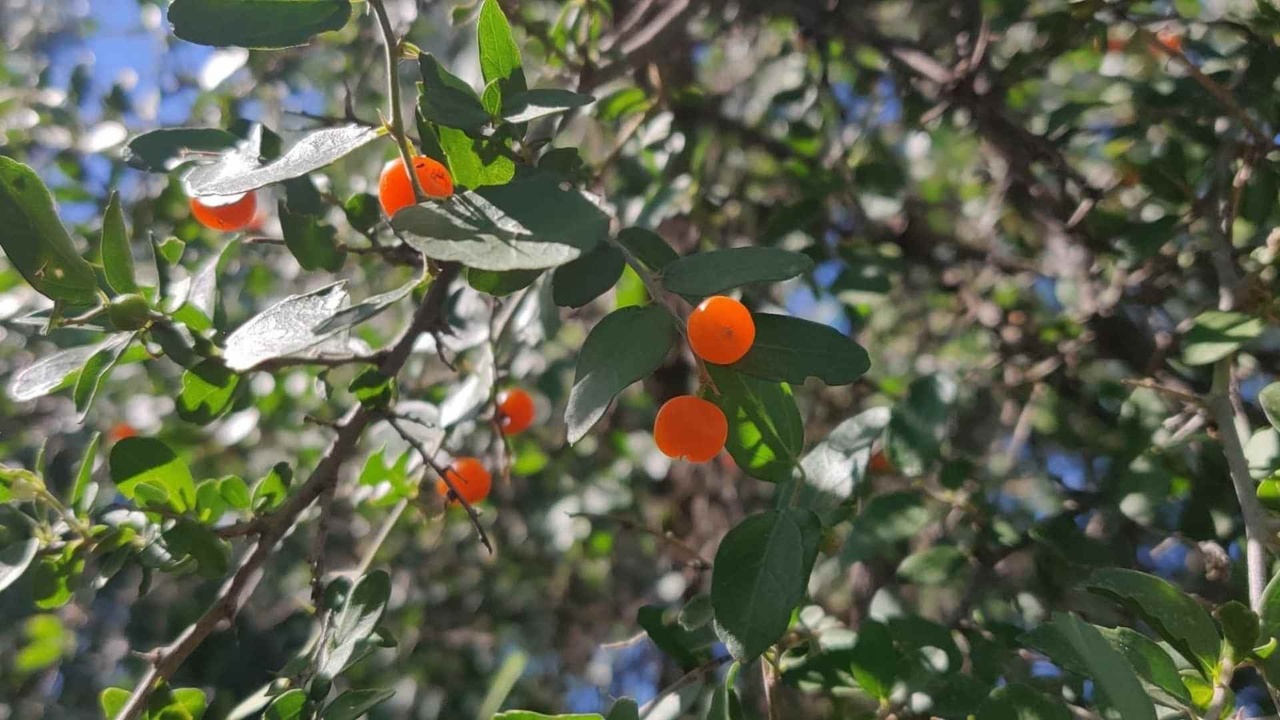
Desert Hackberry- Edible Fruit and Wildlife Magnet
Oct 12, 2022Overview
Desert hackberry(also called spiny hackberry) is a common shrub that grows in Southern Arizona and South Texas, in parts of both the Sonoran and Chihuahuan deserts. Its tasty orange berries are produced in the fall, and are high in phosphorus, calcium, and protein.
Desert hackberry provides important resources for wildlife, including browse for deer, shelter for quail and other ground-dwelling birds, nectar for butterflies and pollinators, and fruit for numerous bird species. A few butterflies and moths even use desert hackberry as a host plant, including the American Snout and the Empress Leilia butterfly.

Identification + Range
Desert hackberry(Celtis pallida) is a scraggly, thorny shrub with gray bark. Although it's quite common, desert hackberry can be hard to identify for beginners due to its small, nondescript leaves that tend to blend in and are easily overlooked. In late summer and early fall this plant suddenly pops into existence with bright, yellow-orange berries appearing in large numbers.
Summer rains bring out small, irregularly toothed leaves(sometimes toothed, sometimes not), shortly followed by bright orange berries with a single seed, crunchy but usually easy to chew through. If you look closely, you will see that the leaves have 3 primary veins instead of one.
Desert hackberry also has distinctly zig-zagged branches. This is especially noticeable on the younger branches. Most of the year desert hackberry can easily be confused with greythorn(Ziziphus obtusifolia), but that plant has blue berries that appear in the spring. With practice, you will be able to tell the plants apart easily, even by their leafless silhouettes.
Desert hackberry grows in Yavapai(barely), Maricopa, Gila, Pinal, Graham, Pima, Greenlee, and Santa Cruz counties. It grows in the Uplands Subdivision of the Sonoran Desert(the central and south-central part of the state), where it is common in washes and mesquite bosques.
In Texas it grows throughout the southern part of the state, with Corpus and San Antonio being its rough eastern and northern limits respectively. It can also be found in West Texas in the Big Bend area, and is widespread throughout northern Mexico, where it is known as granjeno.

Above: Irregular teeth of desert hackberry. Some leaves are toothed, others are entire.
Below: Note the three primary veins.
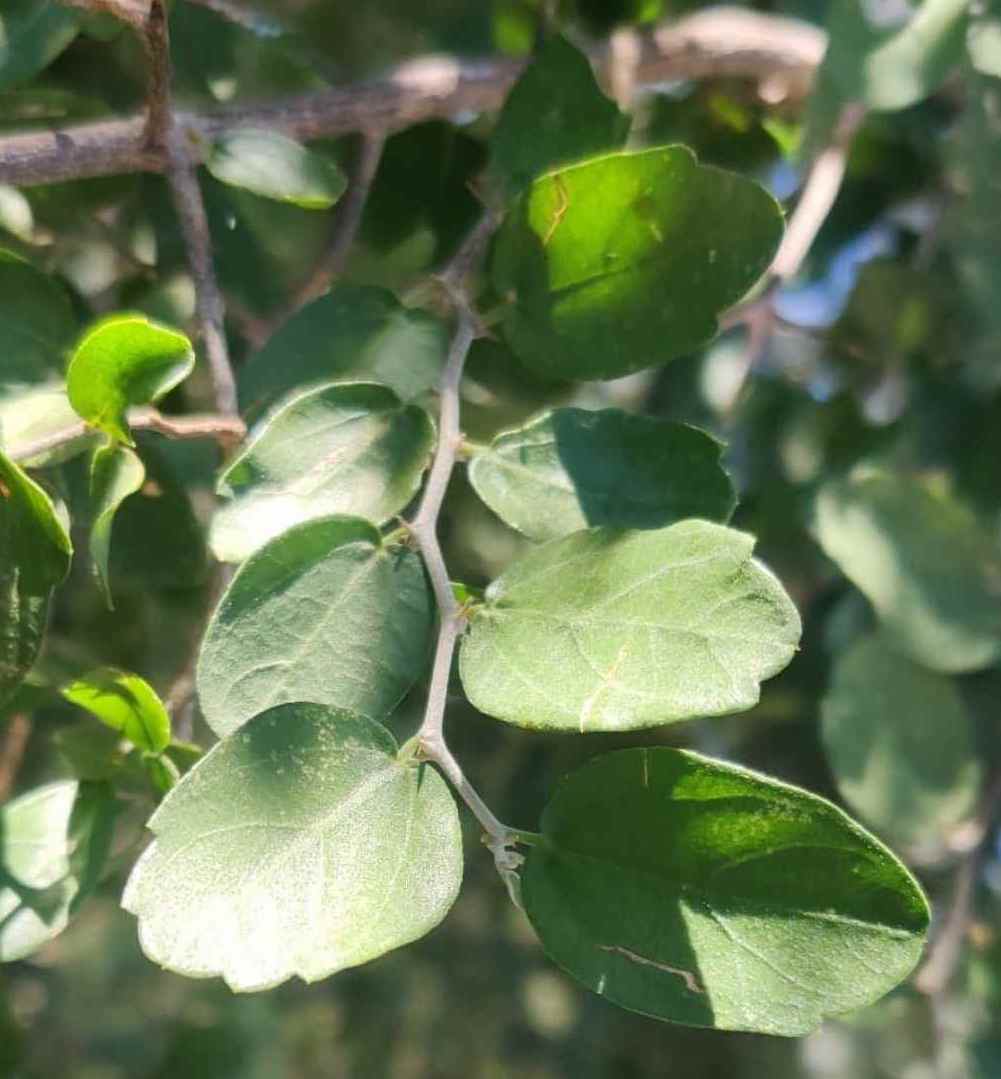
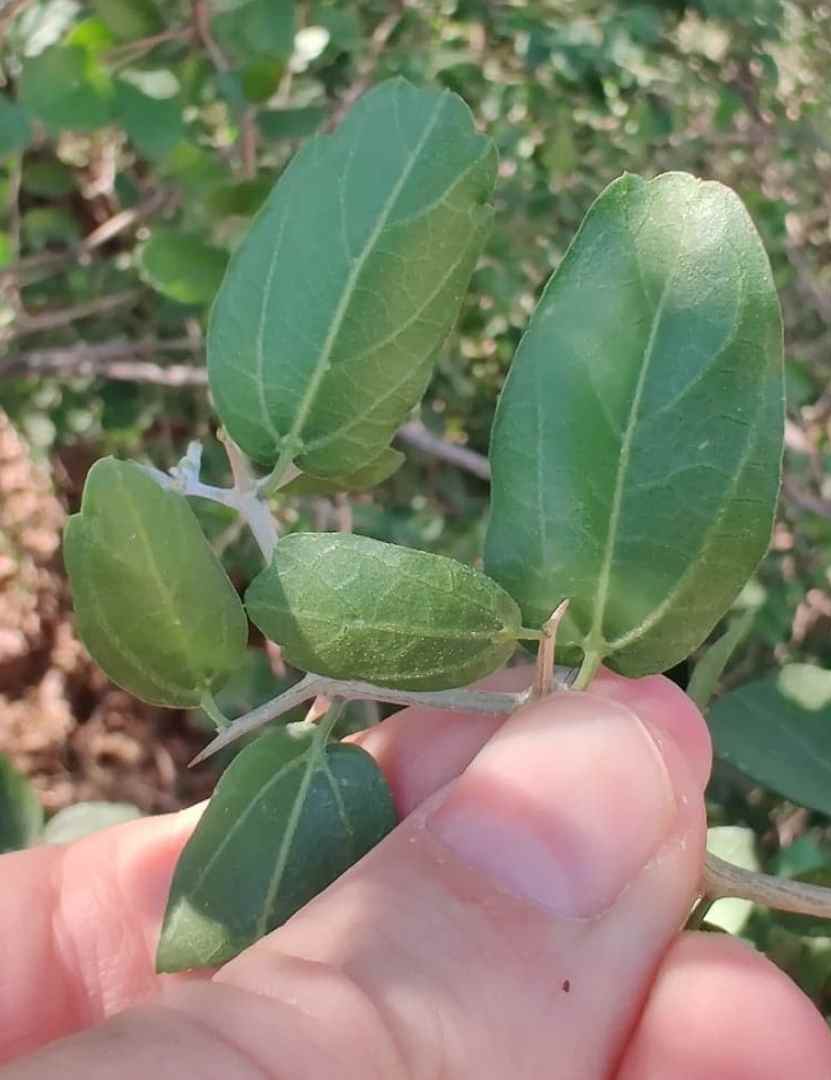
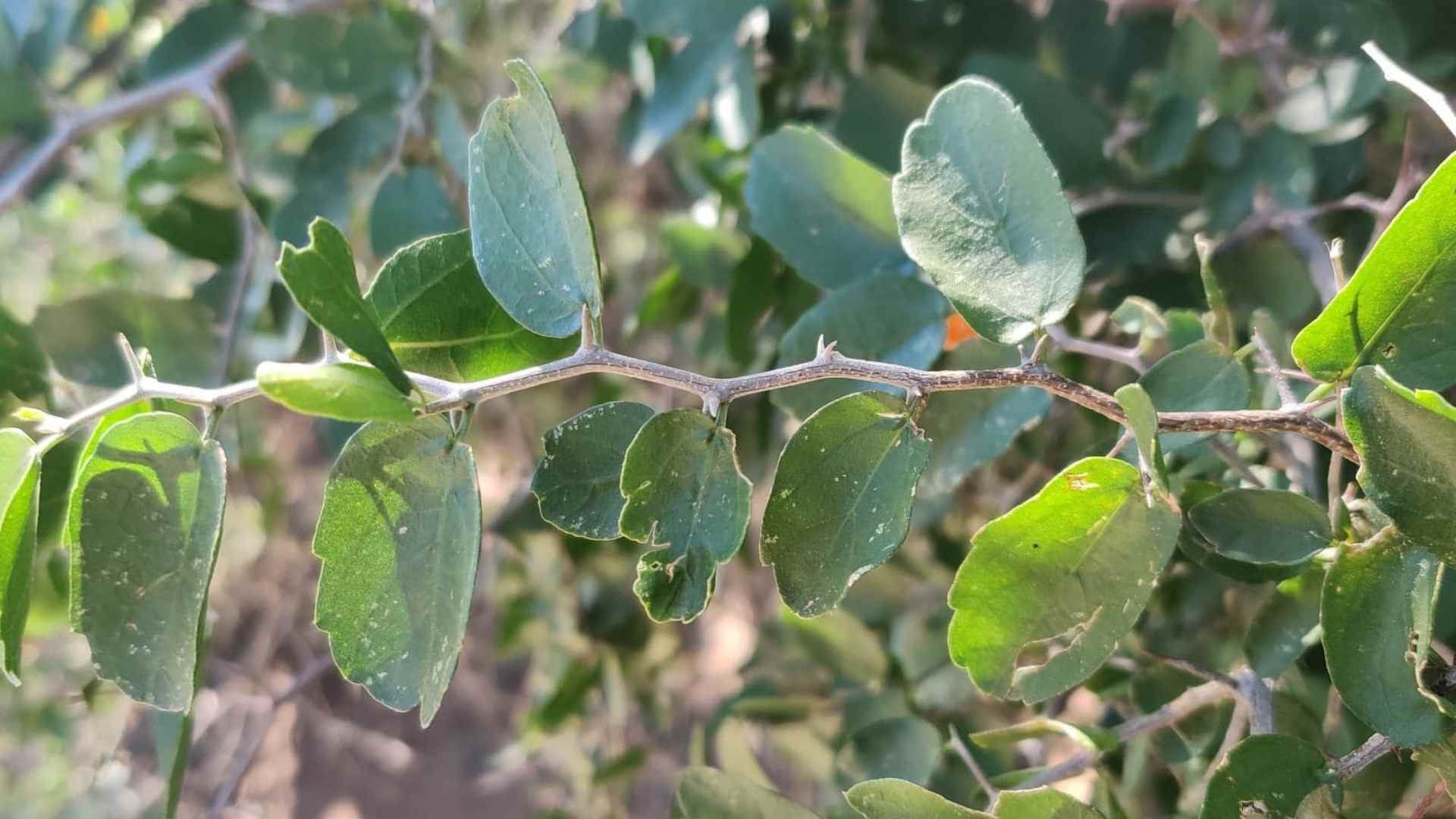
Note the zig-zagging branches of desert hackberry.
Harvesting and Processing
Desert hackberries are ready throughout the month of October in my area, and are usually just eaten raw out of hand. The quality of the fruit varies from year to year, place to place. One year the berries were big and juicy everywhere I looked, but they tasted watery and plain. Other times they are smaller than a pea but taste tropical and sweet. Don’t give up if they don’t taste good on your first try.
Not much has been written about the historical use of desert hackberry fruit(Hodgson). I would guess that desert hackberries were never considered a staple food, or else there would probably be a lot more written about them. My impression is that unlike netleaf hackberry(C. reticulata), desert hackberry provides more of a trailside snack than a calorie-packed emergency food.
Desert hackberry fruit are reported to be relatively high in crude protein, phosphorus, and calcium compared to fruit of other woody plants (Everitt and Alaniz 1981, cited in Hodgson 2001, p. 240). Even if not as a major component of your diet, a plant as abundant as desert hackberry should still be considered as a dietary supplement in a real food emergency.
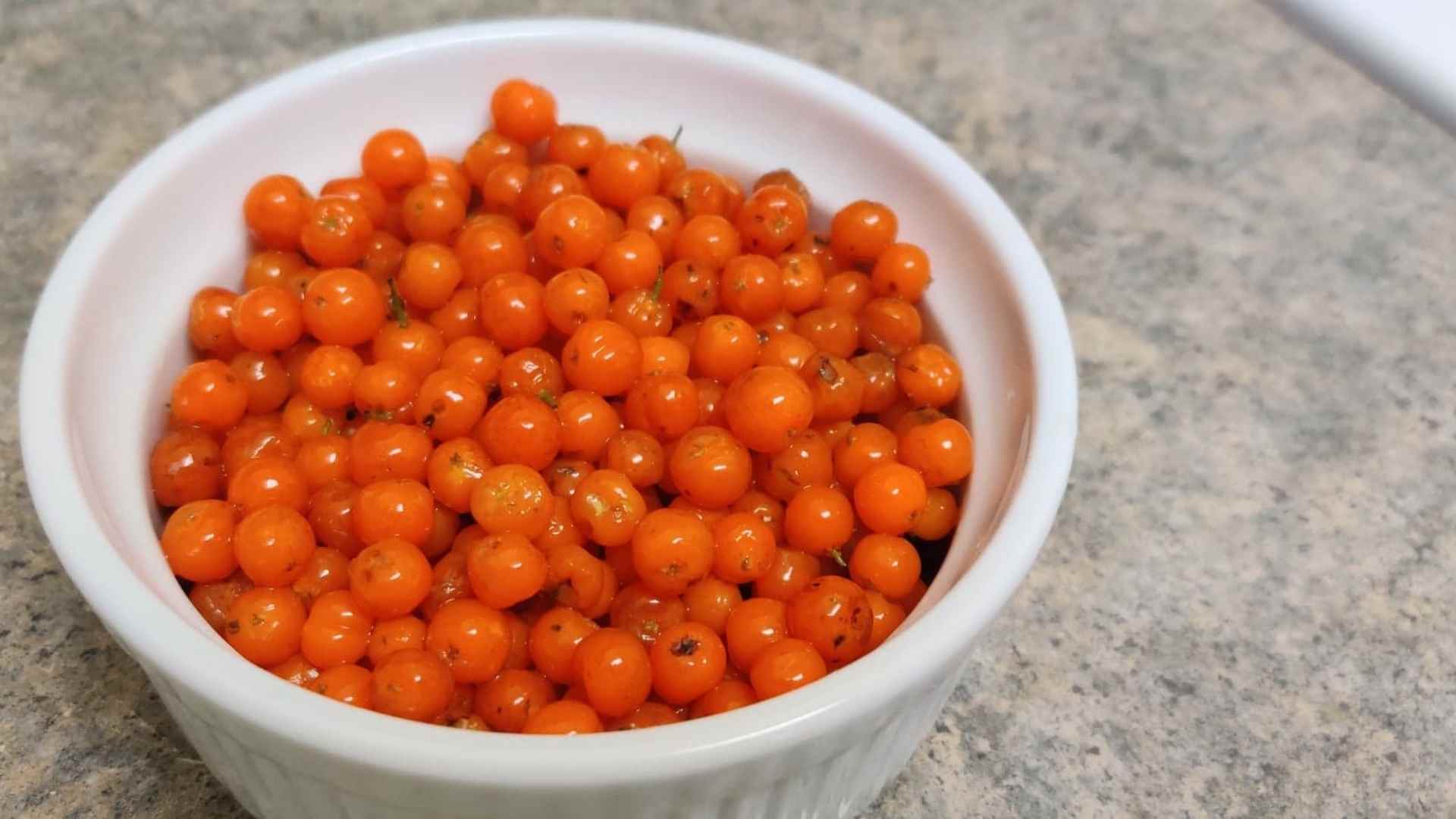
Regenerative Design + Ecology
Like many of our larger trees and shrubs, desert hackberry supports a wide array of wildlife including insects, mammals, birds, and reptiles. It colonizes washes, stabilizing the soil and capturing debris during floods. Desert hackberry is a butterfly and insect magnet, important for many pollinators(and predators).
Desert hackberry is a great choice as a native landscape plant. It can be placed in the understory layer of a desert plant guild, where it can act as a privacy screen or windbreak(Lancaster 2019). It responds well to excessive pruning, and tends to create a layer of leaves underneath, making it a good “mulch” plant. It should be investigated as a potential “chop and drop” plant in desert food systems.
Desert hackberry grows in washes and mesquite bosques in the Sonoran Desert Uplands, where rainfall is higher, temperatures are lower, and steep canyon walls collect rainfall and provide a little extra shade every morning and evening. It should be thought of as a medium-to-low water shrub. It may need extra water in the hotter parts of our region, but in many areas it can survive on rainwater once established. To accomplish this, it would be best to plant it in a rainwater harvesting basin to mimic its natural habitat, and putting it close to a shade tree wouldn’t hurt either.
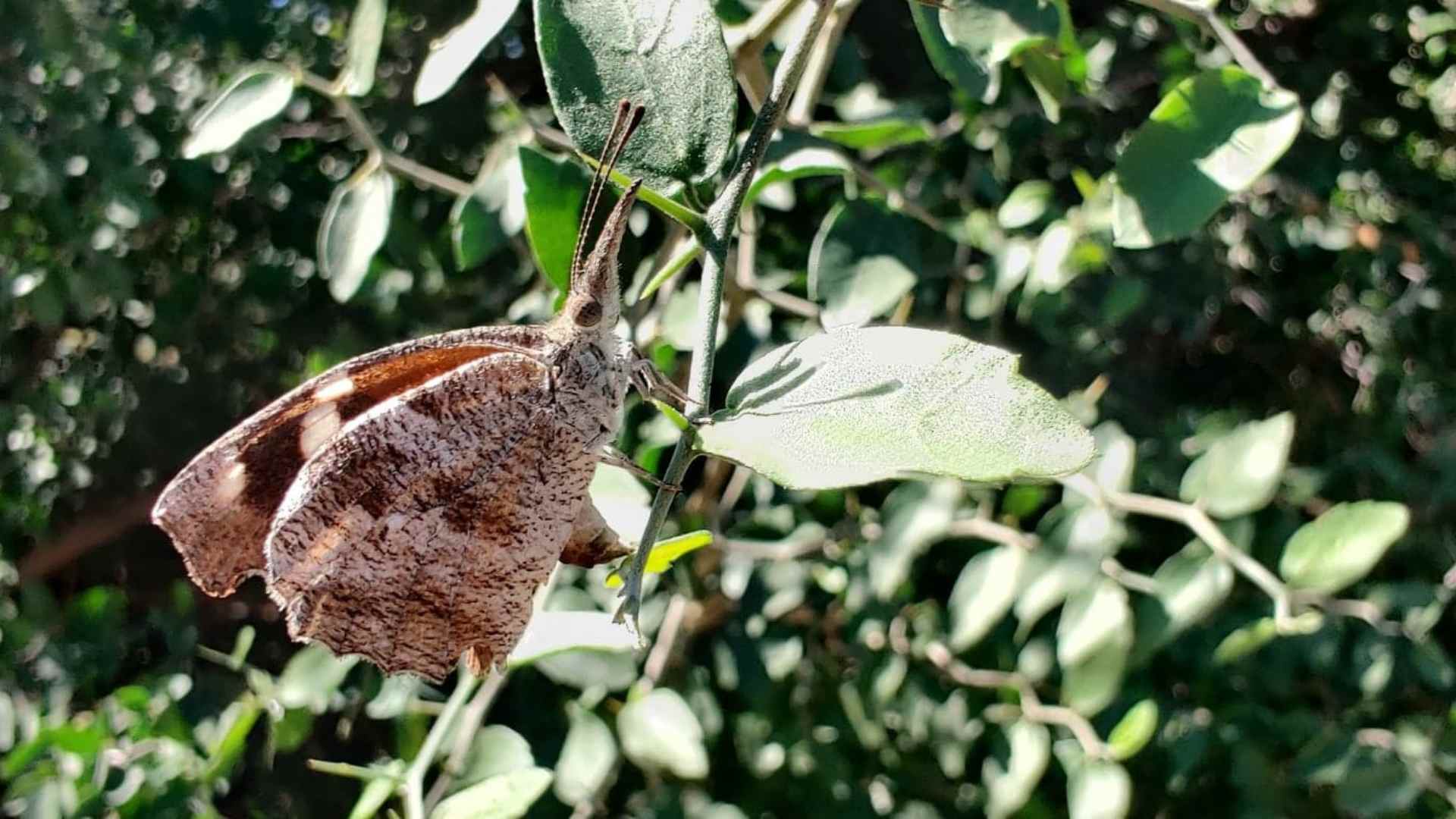
Above: An American Snout perches on a hackberry twig.
Below: A praying mantis egg case on desert hackberry.
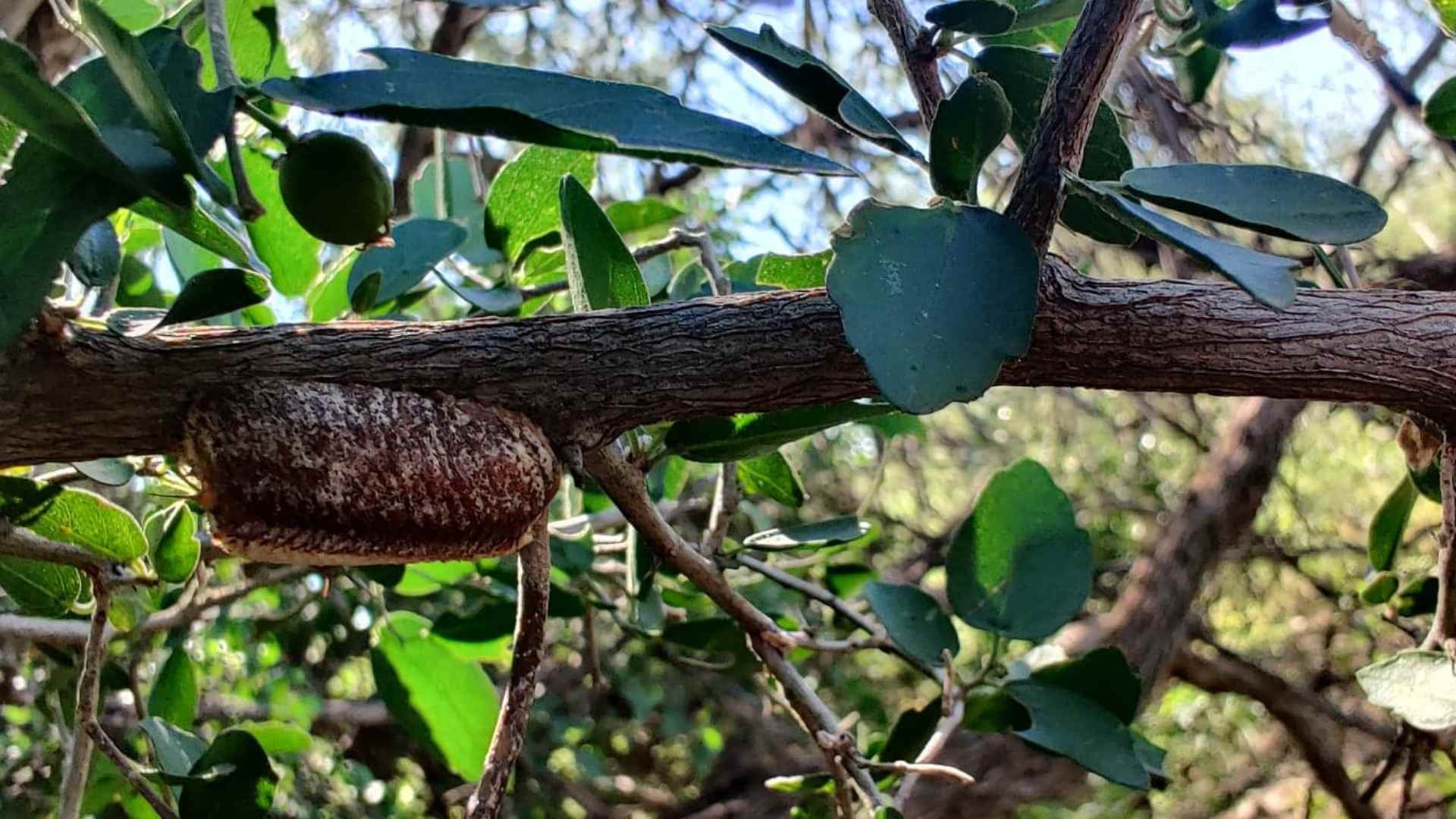
Other Species
A second species of hackberry grows in the Southwest, the netleaf hackberry(Celtis reticulata). Netleaf hackberry is less common in Southern Arizona, where it usually only grows near springs in higher elevation areas.
Netleaf hackberry can be told apart from desert hackberry by its size(it's a tree, not a shrub) and its lack of thorns. The fruit of netleaf hackberry are a much more important food source, being high in sugar, oil, and protein. They're a very useful staple food to know if you happen to live near the tree. Desert hackberry, on the other hand, is a great shrub to know, but probably isn't as important calorically.
Get Our Sonoran Desert Plants Ebook!

Want our FREE ebook on Sonoran Desert foraging? Click this link to download it today: https://www.legacywildernessacademy.com/sonoran-desert-ebook


